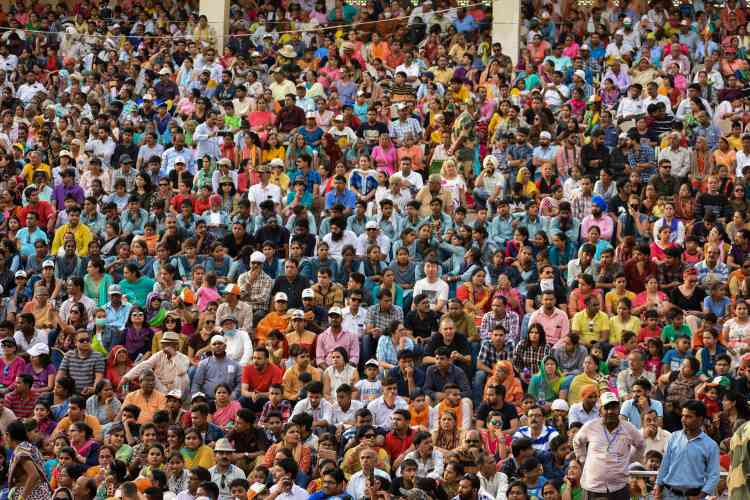
Census 2027: After a long delay, India’s next decadal Census is finally on the horizon. The government has announced that data collection will begin in April 2026, with March 1, 2027 set as the reference date for the population count. For snow-bound regions like Ladakh, Jammu and Kashmir, Himachal Pradesh, and Uttarakhand, the reference date will be October 1, 2026.
This exercise is no ordinary headcount. For the first time since 1931, India will conduct a full-fledged caste enumeration as part of the official Census. This marks a watershed moment in the country’s data and policy domains—shedding light on a deeply stratified social order that has long influenced access to power, opportunity, and justice.
READ | US sanctions on Russian oil expose India’s energy risks
A long-awaited return to caste data
Since independence, India’s Censuses have systematically recorded Scheduled Castes (SCs), Scheduled Tribes (STs), and religious denominations. But the broader caste spectrum—particularly the Other Backward Classes (OBCs)—has remained invisible in official datasets. The last and only full caste count was carried out under British rule in 1931. While a Socio-Economic Caste Census (SECC) was conducted in 2011–12, its caste data was never released.
That will change with the 2027 Census. Enumerators will record caste identity alongside demographic indicators such as literacy, occupation, income, and housing conditions. However, the caste listing is expected to be a raw catalogue of castes, rather than an umbrella categorisation into OBCs or similar groupings.
Scale, scope, and significance
The Census 2027 is one of the largest administrative exercises globally, covering over 1.4 billion people across vastly different geographies, languages, and cultures. This time, the survey will unfold in two phases. The first—house listing—is expected to span five to six months and will document all structures, houses, and households. The second—population enumeration—will be conducted in February 2027 and completed within a month.
What sets the upcoming Census apart is its granularity. The inclusion of caste data adds a new layer of complexity—but also offers an unprecedented opportunity to shape more equitable policies. The comprehensive dataset could help answer long-standing questions: Who lives where, under what conditions, and with what opportunities?
Policy, politics, and power
The government’s decision to revive caste enumeration is both politically sensitive and socially transformative. In a society where caste continues to define status, discrimination, and mobility, the availability of reliable data could push India towards more evidence-based policymaking.
For political parties, caste has long been a powerful mobilisational tool. The numbers that emerge from the 2027 Census may reshape the contours of electoral politics—particularly if they reveal significant imbalances in access to public resources and representation. The data could also renew demands for revisiting the 50% cap on caste-based reservations, as mandated by the Supreme Court.
Moreover, these figures could influence the eventual implementation of women’s reservation in Parliament, and offer a sharper lens to assess regional disparities—especially the growing economic and political divergence between India’s northern and southern states.
The shadow of delimitation
While the Census provides the statistical foundation for redrawing electoral boundaries, the 2027 exercise is unlikely to be completed in time for it to influence the 2029 Lok Sabha elections. Delimitation—the process of redrawing parliamentary and assembly constituencies based on population—requires finalised Census data, which may not be available before 2028.
Yet the implications are far-reaching. States with higher population growth, mainly in the north, stand to gain more seats, potentially tilting the balance of political power. Southern states, which have successfully controlled population growth but contribute disproportionately to national GDP—35% with just 18% of the population—fear marginalisation in the new political arithmetic.
Data as democratic infrastructure
At its core, the 2027 Census is about more than counting people—it is about recognising who counts. The inclusion of caste as a data point signals a democratic maturity: a willingness to confront uncomfortable truths and to ground policy in social reality.
It also opens up a host of policy questions: What is the scale of rural-urban disparity in housing and income? How many Indians qualify for welfare schemes like free foodgrain distribution? How have migration and consumption patterns evolved? How many remain excluded from basic services?
India’s success in this colossal administrative task will depend not just on logistics, but on political will—especially to release and act on the data collected. As with the SECC, non-disclosure would defeat the exercise. Transparency will be critical.
A milestone, not a miracle
The return of caste to the Census is both overdue and fraught. It may unsettle entrenched political equations. It may revive dormant debates about quotas, representation, and fairness. But it also offers India a rare chance to reimagine inclusion—not through slogans, but through statistics.
If the exercise is carried out with rigour and integrity, the 2027 Census could mark the beginning of a more honest and responsive state. After all, you cannot govern what you do not count.
